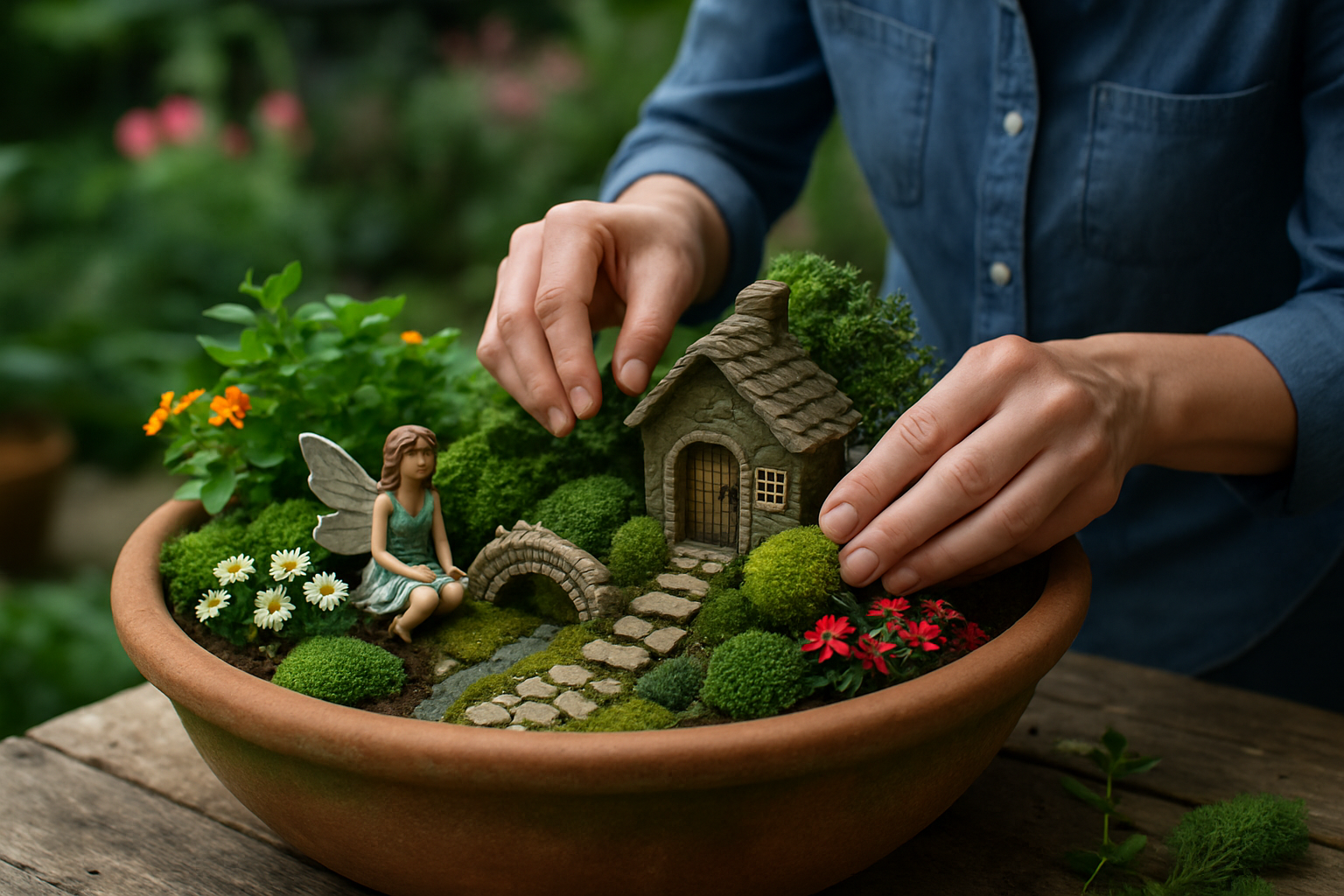Whimsical Wonderland: The Enchanting World of Fairy Gardens in Adult Spaces
Imagine stepping into a miniature oasis, where tiny houses nestle among lush greenery and pebble pathways wind through moss-covered landscapes. This isn't a scene from a children's storybook, but rather the latest trend captivating adults in the world of home and garden design: fairy gardens. These pint-sized paradises are bringing a touch of magic and whimsy to grown-up spaces, offering a creative outlet and a serene escape from the hustle and bustle of everyday life.

However, it wasn’t until the late 1990s that the term fairy garden began to gain widespread recognition. Garden centers and craft stores started offering specialized miniature accessories, fueling the imagination of hobbyists and gardeners alike. The trend has since evolved, transcending its initial association with children’s play and finding a dedicated following among adults seeking a unique form of creative expression.
The Allure of Miniature Worlds
The appeal of fairy gardens for adults lies in their ability to transport the creator and viewer into a world of fantasy and wonder. These miniature landscapes serve as a form of escapism, allowing individuals to craft and curate their own idealized environments. The process of designing and maintaining a fairy garden can be deeply meditative, offering a respite from the stresses of modern life.
Moreover, fairy gardens provide an accessible entry point into gardening for those with limited space or horticultural experience. The small scale of these projects makes them manageable for beginners while still offering endless possibilities for creativity and customization. From urban apartment dwellers to suburban homeowners, fairy gardens offer a way to bring a touch of nature and whimsy into any living space.
Designing Your Fairy Garden
Creating a fairy garden is a deeply personal and creative process. The first step is choosing a container or location for your miniature world. While traditional outdoor gardens remain popular, many adults are opting for indoor fairy gardens in terrariums, vintage teacups, or repurposed household items.
When selecting plants for your fairy garden, consider the scale and growing conditions. Miniature plants and dwarf varieties work well, as do moss and small succulents. The key is to create a balanced ecosystem that can thrive in its contained environment.
Accessories play a crucial role in bringing your fairy garden to life. Tiny furniture, houses, and figurines can be purchased from specialty stores or crafted by hand. Many enthusiasts enjoy incorporating found objects from nature, such as acorns, pebbles, and twigs, to add an organic touch to their creations.
The Therapeutic Benefits of Fairy Gardening
Beyond their aesthetic appeal, fairy gardens offer numerous therapeutic benefits for adults. The act of creating and tending to these miniature worlds can be a form of horticultural therapy, reducing stress and promoting mindfulness. The tactile nature of working with small plants and objects can be particularly soothing, providing a sense of accomplishment and connection to nature.
Fairy gardening also fosters a sense of play and imagination often lost in adulthood. By engaging with these whimsical creations, adults can tap into their inner child, allowing for moments of joy and wonder in their daily lives. This return to playfulness can have positive effects on overall mental well-being and creativity.
Fairy Gardens in Interior Design
As the popularity of fairy gardens among adults has grown, so too has their integration into broader interior design trends. These miniature landscapes are no longer confined to outdoor spaces or children’s rooms but are finding their way into sophisticated living areas, offices, and even commercial spaces.
Interior designers are incorporating fairy gardens as unique focal points in home decor. A well-crafted fairy garden can serve as a conversation starter, adding depth and personality to a room. Some designers are taking the concept further, creating larger-scale installations that blur the line between art and horticulture.
The versatility of fairy gardens allows them to complement a wide range of design styles. Whether nestled in a rustic wooden box in a farmhouse-style living room or displayed in a sleek glass terrarium in a modern office, these miniature worlds can adapt to any aesthetic.
The Future of Fairy Gardens
As the trend continues to evolve, we’re seeing exciting new directions in fairy gardening for adults. Technology is beginning to play a role, with some enthusiasts incorporating small LED lights or even miniature water features into their designs. There’s also a growing emphasis on sustainability, with a focus on using eco-friendly materials and native plants.
Social media has played a significant role in the spread of fairy garden inspiration, with platforms like Instagram and Pinterest showcasing stunning examples and fostering a community of adult enthusiasts. Online forums and local meetups are providing spaces for fairy gardeners to share tips, trade accessories, and showcase their creations.
As we look to the future, it’s clear that fairy gardens are more than just a passing fad. They represent a deeper desire for connection to nature, creative expression, and a touch of magic in our everyday lives. For adults seeking a unique and rewarding hobby, the world of fairy gardening offers an enchanting escape, limited only by the boundaries of imagination.




